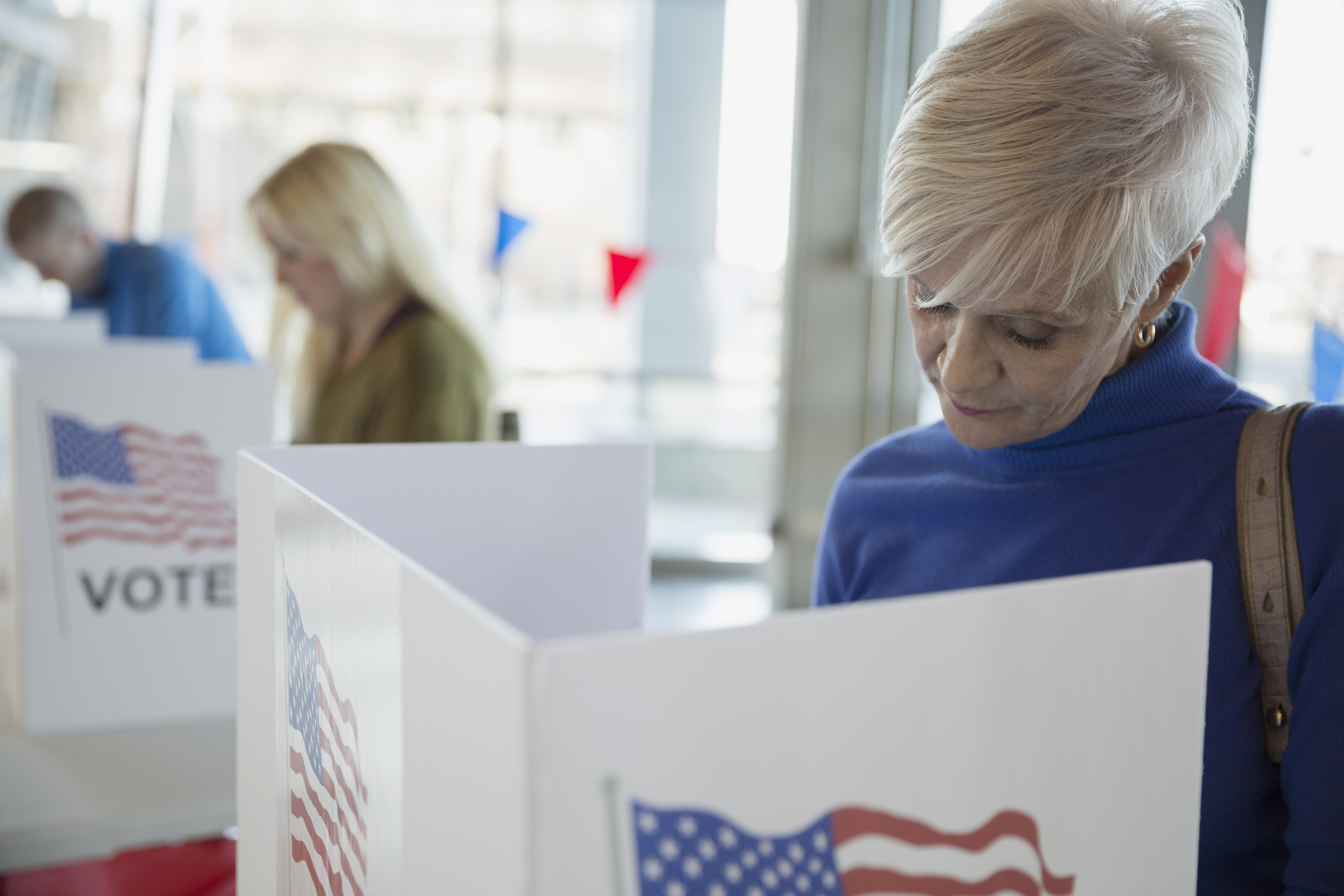AARP Hearing Center
50+ Women Voters: Monumental in Numbers but Not Monolithic on Issues
By Nancy A. LeaMond, September 20, 2022 11:36 AM

We’re all hearing how this midterm election season is a “split screen” on inflation versus abortion. But for OLDER WOMEN VOTERS, is it that simple?
Looking at AARP’s recent polling, I’d say not necessarily.
Back in March, our national She’s the Difference survey found that rising cost of living was by far the top concern of likely women voters age 50+. Close to half (46%) said it was one of the most important issues facing the country, followed by division in the country (35%) and COVID (21%). Abortion didn’t crack the top 10.
While our next She’s the Difference poll won’t be released for a few weeks, we have seen signs of issues beyond inflation bubbling up in several important battleground states and the most competitive Congressional districts. Abortion is in the mix – particularly with Democratic women 50+ – but so are voting rights and gun violence. Immigration is mentioned a lot by Republican women 50+. Still, there is no doubt that rising prices and concerns about the economy in general remain top of mind for a significant percentage of these women.
Here’s a quick snapshot of how these priorities breakdown in the 56 most competitive Congressional districts:
Top 3 issues for 50+ women overall:
- Inflation and rising prices tied with the economy (13%)
- Abortion (11%)
- Immigration and border security (10%)
Top 3 issues for 50+ Democratic women:
- Abortion (20%)
- Voting rights (15%)
- Gun control/gun rights (13%)
Top 3 issues for 50+ Republican women:
- Immigration and border security (21%)
- Inflation and rising prices (18%)
- The economy (17%)
Top 3 issues for 50+ Independent women:
- The economy (17%)
- Inflation and rising prices (13%)
- Taxes, government spending & debt (10%)
There are also differences across states. For example, when thinking about the election for Senate or Congress:
- In Florida . . . Democratic women 50+ are more focused on Social Security/Medicare and abortion, while Republican women 50+ are looking at inflation, immigration, and taxes/spending for their vote. Independent women 50+ are in the middle, with their concerns scattered across all five issues.
- In Georgia . . . while inflation tops the list, Democratic women 50+ also prioritize guns and voting rights, and Republican women 50+ are focusing on immigration.
- In Pennsylvania . . . Republican women 50+ are focused solidly on inflation, Democrats on guns, abortion, and Social Security/Medicare – and Independents’ interests are also scattered across many issues.
- In Michigan . . . abortion tops the list overall, driven by both Democratic women 50+ and Independents, followed by inflation and Social Security/Medicare. Republican women 50+ are focused on inflation and immigration.
- In Nevada . . . women 50+ give five issues double-digit support. Inflation tops the list followed by Social Security/Medicare, taxes/spending, immigration and abortion. Looking at differences by party, Democratic 50+ women prioritize Social Security/Medicare and abortion with inflation at number three; Independents are focused on Social Security/Medicare and inflation by 10+ points over any other issue; and Republican women 50+ are looking at immigration, taxes/spending and inflation.
What should we take away from all this? Women 50+ are not a monolith. They are a large, diverse group whose interests and priorities reflect that diversity as well as the complexities of their day-to-day lives. How they decide to vote will depend on a lot of factors . . . their lived experience, their views of the candidates, and the issues that matter to them.
One thing is certain... they will vote in large numbers. Roughly one in three likely voters are women age 50+. And, they are fairly evenly divided by party. This makes them arguably the most consequential and influential voting demographic.
So, candidates need to pay attention and really listen to them if they want to win.
































































